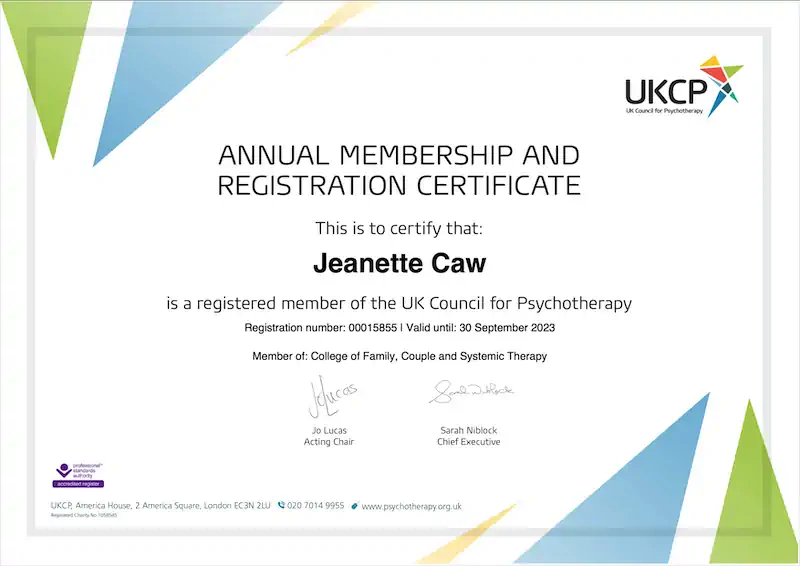Anorexia Nervosa and Psychotherapy
There are several types of eating disorders, some more serious than others and each requiring modification of the therapeutic approach used to treat them. What follows is a brief description of each, possible causes, risks involved in maintaining the behaviour and the ways in which psychotherapy can help.
The four types of eating disorder that are most commonly presented are:
1. Anorexia Nervosa
2. Bulimia Nervosa
3. Binge Eating Disorder
4. EDNOS (Eating Disorder Not Otherwise Specified)
I will discuss each one in turn.
Anorexia Nervosa
Anorexia is characterised by a desire to maintain body weight below what is agreed to be a healthy BMI (19-25). There are diagnostic manuals that list the factors that need to be present in order to make a diagnosis of anorexia. Of these the key ones are this desire to maintain body weight at or below a BMI of 17.5 and:
• Amenorrhea or cessation of periods (in girls and women)
• Distorted body image
• An intense fear of becoming fat
• Compensatory behaviours to maintain low body weight which can include all or just one of these:
- Excessive exercise
- Restriction of food intake (usually present in all cases of anorexia)
- Vomiting (purging type anorexia)
Signs of possible anorexia include:
• Missing meals, making excuses for not having meals (saying they have eaten previously elsewhere)
• Avoiding food groups particularly cheese, fatty foods and sugary foods, all of which may have been previously enjoyed
• Leaving the table immediately after eating so they can vomit
• Obsessively weighing themselves (several times a day) and checking their body in the mirror
• Physical problems such as feeling cold all the time, feeling dizzy on rising to standing from sitting, hair loss, dry skin, lacking energy
Causes of Anorexia
A multi-faceted model is useful in considering the causes of anorexia. Undoubtedly the emphasis on beauty and slimness perpetuated by the fashion and film industry influence girls’ and women’s views on how they ‘should’ look. However, some experts have pointed to anorexia being written about centuries ago when such pressures did not exist. The first reported cases of what we now would understand to be anorexia appear in the nineteenth century. In addition, cases of anorexia are reported with similar prevalence in areas without a strong western influence. Although it is often not helpful to generalise on personality types when discussing health difficulties there does seem a tendency for people who develop anorexia to be:
• Perfectionistic in personality style
• High achievers
• Reticent in expressing emotions
• Reluctant to acknowledge to themselves or others their own needs, whether physical or emotional
• Obsessive and compulsive (this differs from obsessive compulsive disorder but indicates the presence of unwanted thoughts and urges leading to ritualistic behaviours and rules that have an element of compulsion to them)
• Prone to anxiety
Puberty is the most common time to develop anorexia and seems to act as a triggering factor for some people. It is likely that the following are contributory factors:
• The stress of puberty itself
• The transition from primary to secondary school
• Becoming accustomed to physical changes, which for girls involves the loss of a boy like physique and the development of a greater body fat: muscle ratio in preparation for menstruation
• Facing life choices regarding independence and the future
• Exam pressure
It is most likely that a combination of genetic and environmental factors lead to the development of anorexia. This fits with the current beliefs of neuroscientists who propose that we all born with all the neurons we need, but which ones are brought into play are dependent upon our environmental circumstances. There are also some schools of thought which propose the brains of anorectics have altered elements which mean that their perception of appetite, satiation and the felt sense of space they take up in the world is altered for them.
Treatment
As stated above a medical examination is necessary as there are physical risks to maintaining body weight at a BMI of below 17.5. These include:
• Osteoporosis
• Loss of fertility (which is mostly restored about periods re-starting)
• Hypokalaemia – a drop in potassium in the blood which can lead to abnormal heart rhythms, constipation, fatigue, muscle damage and paralysis
• Complications in nearly every vital organ in the body
Therefore, clients with a diagnosis of anorexia should be being seen by a medical professional who are medically responsible for their care. Moderate to severe cases of anorexia are usually treated within the NHS. However, milder cases may not be and may therefore present for private psychotherapy. In my practice I insist that clients who maintain their body weight below a BMI of 17.5 are regularly reviewed by their GP and that they consent to me having contact with their GP. I will not see a client with a body mass of below 15 as I believe they should be treated in statutory services.
In terms of treatment, there are three distinct phases to be followed:
1. Nutritional, weight restoration, physical safety
2. Behavioural
3. Psychological
Ideally, clients seen within the NHS will be seen by a dietician who will establish a meal plan which will lead to healthy weight restoration. It is essential when working with anorexia to ensure the physical safety of the client. In addition, it is very difficult to proceed with therapeutic work when the brain is starved as this typically leads to rigid and inflexible thinking.
Once a client is weight restored to a BMI of 15 or above, behavioural and psychological work can begin. Behavioural changes are the precursor often to psychological changes. As anxiety plays a key part in anorexia I use psycho-education and behavioural experiments in therapy. Psycho-education helps to explain the function of the eating disorder and how it relates to anxiety. Behavioural experiments teach clients the ability to manage their anxiety in different ways. Frequently, anorexia has become a way of managing intense anxiety and stress and different strategies need to be found. Behavioural changes also encompass putting plans in place to eat regularly, reduce exercise, participate in social activities etc. The focus on behavioural changes mean that the client is supported and encouraged to make these changes even though they may initially feel unwanted and difficult.
Psychological change comes last in treating anorexia but is helped considerably by behavioural changes having been made as this will already have affected the client’s cognitive processes. At this stage of the work I use cognitive behavioural methods, including diary sheets and techniques from Acceptance and Commitment Therapy. It is important to acknowledge the losses involved in disengaging from anorexia. Many anorectics report feeling unique and special because of their ability to control their body weight in a way that the majority of the population find difficult. They also describe their illness as being a visible communication of their internal distress and express a fear that being physically well will lead to an assumption by others that emotionally they are recovered too. Teaching ways of adequately communicating their needs is therefore an essential element of the work.
Working with Families
The NICE guidelines recommend family work where the young person is willing and consenting for this to take part. I regularly undertake family therapy and find that this is a useful way of working. It is essential with adolescents that parents are involved in supporting their child’s recovery. Anorexia is a powerful illness and can easily organise family members into opposing camps where emotions are heightened and there is no agreed consensus for how to tackle the difficulty. This is not surprising as watching their child starve themselves is inevitably intensely anxiety provoking for parents. Engaging parents then in therapeutic work and being clear about the role they need to play is frequently beneficial. Family work can either involve parents being involved in all of the sessions and therefore learning about the cognitive behavioural techniques I use. Alternatively, it might be that the young person prefers to undertake some individual work with parents being involved only in some sessions to support the behavioural changes that need to occur at home.
As anorexia does provoke strong emotions and also can be indicative of a reluctance on behalf of the sufferer to communicate emotionally, family sessions that encourage open discussion of relational difficulties is useful. Talking about subjects that are hard to speak about in the presence of a therapist means there is more safety for each family member to express their point of view. Family therapy enables every perspective to be heard and to be thought about even when individual opinions and experiences can seem in direct conflict with each other. The ability to be able to hold in mind one own’s perspective and listen to that of another is central to optimal relational functioning and is a skill that can be learnt through family therapy.
More to follow……
If you would like to arrange an initial session or contact me about any of the other services mentioned in these pages
I practice within Sheffield from a venue in S7.

